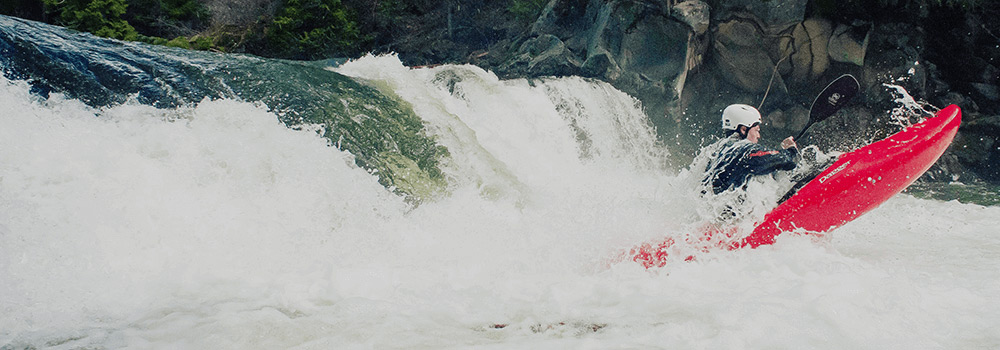Turning Stroke
The turning stroke is used to point your boat in the direction you want to go. The main
difference between the turning stroke and the forward stroke is the position of the paddle shaft.
The paddle shaft is positioned vertically for the forward stroke, top hand over bottom hand. The
paddle shaft is positioned horizontally for the turning stroke, as close to parallel with the surface
of the water while still maintaining full blade immersion. The difference in positioning allows the
boat to spin. This is the whole purpose of this stroke, and in many ways, it is far easier than the
forward stroke because whitewater boats want to spin anyways. Once again, in practice on the
river, there are few instances where you will take such a deliberate turning stroke in the same
way you might practice spinning the kayak in flatwater, but nonetheless, the turning stroke or
slight variation typically proceeds any major direction change on the water.
Key Points:
● Many of the concepts of the forward stroke apply here too.
● Key to a good turning stroke, look where you want to go.
● Main difference between your forward stroke and turning stroke, instead of a
vertical shaft, lower your top hand even with your torso to begin the stroke.
Draw Stroke
The draw stroke is your key to freedom on the river. This is the stroke that allows you to
enter and exit eddies, and sail around the river with a sense of style, well, hopefully at least.
Essentially, the draw stroke is used to catch the current and use it to propel your boat. The draw
stroke works in much the same way a keel works on the bottom of a boat. You can control the
angle and positioning of your blade depending upon what you are trying to do and where you
are trying to go.
Typically, folks talk about bow draws and stern draws. The bow draw is used when you
are leaving an eddy to get out into the main part of the current. If your boat is facing upstream,
you stick the power face of your blade out into the oncoming current to catch it and whip your
bow around. Just as you feel the current catch your blade, you are going pull your paddle
toward the center of your boat and hold it in place when your boat is pointed in your desired
direction of travel. The stern draw is often used when surfing river waves. Much like the same
way surfing fins are positioned at the back of a surfboard, a kayaker can throw their paddle into
a similar position and use it to carve the face of a wave. This creates some awesome times!
Key Points:
● Key point: the draw stroke is about controlling your turns
● Slightly at or behind the center of the kayak
● Turn your paddle into a keel, this is a draw stroke
● Look at your target, body leads the turn, control every turn with the blade on the
inside of the turn, control your turns with your draw stroke
● These are essential to catching eddies and getting out of eddies
● Vertical shaft, top hand over bottom hand, to get the most powerful stroke
● As you develop skills, your forward, sweeps, and draws start to blend seamlessly
as you learn to use the current in combination with your strokes to move about
the river with grace and style. The goal is not just getting down the river, but
navigating the river in pursuit of refining these skills. This is what allows you to
become a more a skilled paddler over time.

